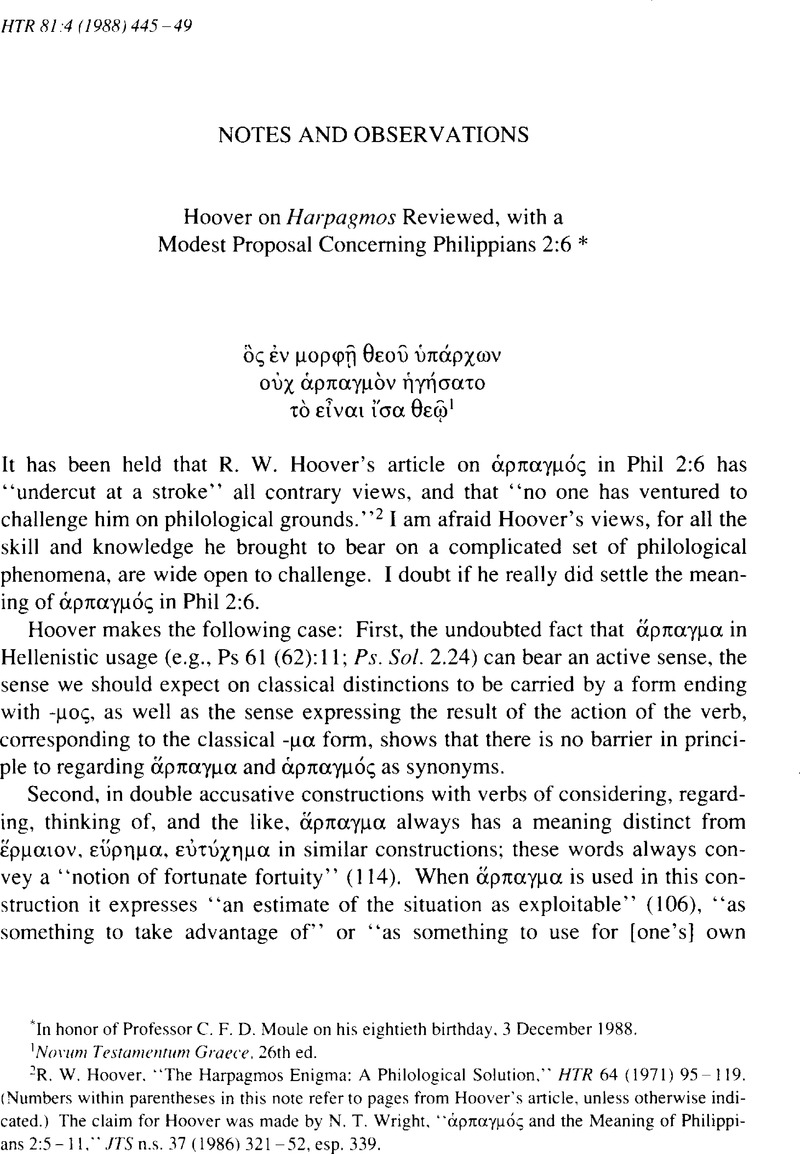Published online by Cambridge University Press: 10 June 2011

1 Novum Testamentum Graece, 26th ed.
2 Hoover, R. W.. “The Harpagmos Enigma: A Philological Solution.” HTR 64 (1971) 95–119CrossRefGoogle Scholar. (Numbers within parentheses in this note refer to pages from Hoover's article, unless otherwise indicated.) The claim for Hoover was made by N. T. Wright.ρπαγμς and the Meaning of Philippians 2:5–11.”, JTS n.s. 37 (1986) 321 –52, esp. 339.
3 Cf. Meyer, H. A. W., Kritisch Exegetisches Handbuch über die Briefe Pauli an die Philipper, Kolosser und an Philemon (4th ed.; Göttingen: Vandenhoeck & Ruprecht, 1874Google Scholar) 72.
4 Professor Moule has always insisted on this as the philological starting point for considering our problem. Moule, C. F. D., “Further Reflections on Philippians 2:5– 11,” in Gasque, W. Ward and Martin, Ralph P., eds., Apostolic History and the Gospel: Biblical and Historical Essays Presented to F. F. Bruce on His 60th Birthday (Grand Rapids: Eerdmans, 1970Google Scholar) 264–76.
5 Jaeger, W. W., “Eine stilgeschichtliche Studie zum Philipperbrief,” Hermes 50 (1915) 537–53Google Scholar.
6 Ibid., 267.
7 Ross, John, “APΠAΓMOΣ (Philippians II 6),” JTS 10 (1909) 573–74CrossRefGoogle Scholar.
8 Meyer, Exegetisches Handbuch, 71–78, 85–88; Alford, Henry, The Greek Testament (2d ed.; London, 1857Google Scholar) 3. 159: Ross, “APΠAΓMOΣ”: Moule, “Philippians 2:5–11,” 266–68.